The classical interpretation of Rome as a palimpsest of architectural layers—Baroque buildings atop Renaissance and medieval constructions, themselves atop their Roman predecessors—features a closing layer of verticality: ceilings of painted trompe l’oeil arches, heavenly vaults, and celestial chambers populated with ascendant saints, martyrs, and putti. From the very starting of her profession, Zaha Hadid sited her buildings within the air, floating buildings on shadow, mild, and seams of house that lifted volumes above the bottom, relating her work to a different custom—Rome’s. Hadid, and the town’s architects of the Renaissance and Baroque that preceded her, aspired to the air, the skies, and the heavens. In designing the lodge conversion of the Palazzo Capponi, on the By way of di Ripetta, a department of the town’s Sistine Trident radiating from the Piazza del Popolo, Hadid and her group at Zaha Hadid Architects (ZHA) led by Paola Cattarin, began the place Baroque architects ended their palimpsest—on the vaulted ceilings.
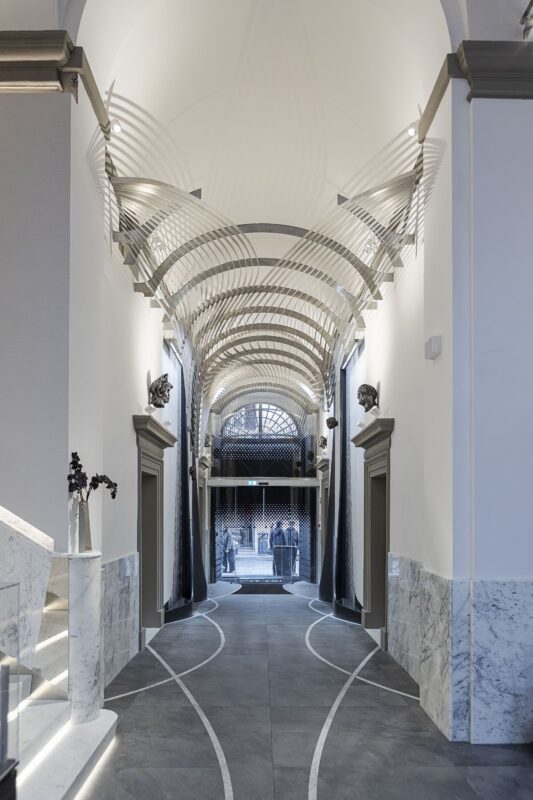
© Jacopo Spilimbergo
As Cattarin notes, Rome’s architectural historical past could be learn in its masonry vaults, from the Roman, by way of the Renaissance and Baroque durations, into the 18th Century: “We took inspiration from this concept, to make a brand new interpretation of vaults and their intersections. All of the totally different rooms, all the way down to the furnishings, are designed with this idea.” Looking for a property in Rome for a brand new lodge, Alfredo Romeo, founding father of Romeo Lodges, stumbled on the historic Palazzo Capponi. “Rome is without doubt one of the most stunning cities on this planet,” he explains, “and Piazza del Popolo was the salotto of Rome within the Fifties and ’60s. Federico Fellini and Marcello Mastroianni repeatedly met on the Bar Rosati on Piazza del Popolo. It’s a legendary piazza, and by night time particularly, it has a magical enchantment.” Romeo bought the palazzo in 2012 with an current tenant: the Italian authorities’s Istituto Nazionale Assistenza Infortuni sul Lavoro (INAIL)—Nationwide Institute for Help of Accidents at Work—had occupied the constructing since 1951. Whereas the core of the constructing dates from the sixteenth century, it additionally consists of elements from fully totally different historic durations. Most not too long ago, two wings had been added by the INAIL administration within the Fifties. Within the absence of legal guidelines, on the time, to guard historic structure, INAIL transformed a lot of the palazzo’s remaining interiors in its conversion to administrative places of work, making vital adjustments to the palazzo and its artwork. A collection of Palazzo Capponi’s Seventeenth-century frescoes had been additionally displaced. Intricately painted on canvas, the works had been faraway from their unique location, positioned in wall frames, and repainted—fully masking the unique frescoes. Painstaking restoration steadily uncovered and revealed these delicate works and 4 centuries after their creation, they are often admired as soon as once more by company of the lodge.
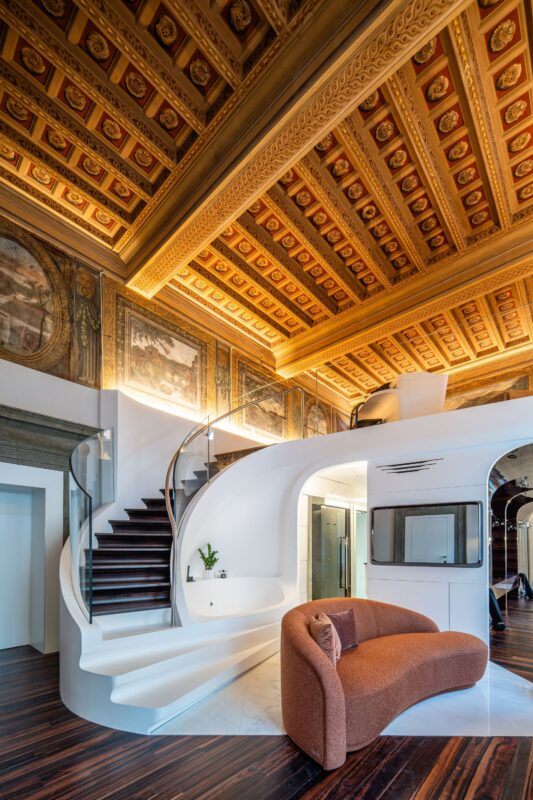
© Chris Dalton
With little of the unique interiors remaining, Romeo continued the longstanding custom custodians and patrons of Italy’s grand buildings have adopted over the previous 5 centuries—commissioning the pioneering architects and artists of their time to create fascinating novel interiors showcasing the experience of expert artisans and craftsmen working within the best supplies. Romeo Design started collaborating with ZHA in 2015, choosing the architects’ free types and fluid strains to make sure an unique design relatively than the repetition and resemblance evident in lodge interiors throughout the globe. “We’re remodeling a interval constructing with avant-garde designs by Zaha Hadid. It’s a outstanding dialogue between up to date and historic structure,” explains Romeo. Whereas the palazzo’s exterior advertises Renaissance, the composite format of its interiors eschewed Renaissance coherence. In changing a palazzo that had been considerably altered over the centuries—and used as a civic workplace constructing for the previous seven a long time—ZHA re-established a processional sequence of areas from entry to the visitor room. From the reception space, company cross into the previous courtyard, now vaulted with a retractable glass roof. This newly enclosed foyer is a distribution level from which the restored grand stairways result in visitor rooms and, past, to the backyard.
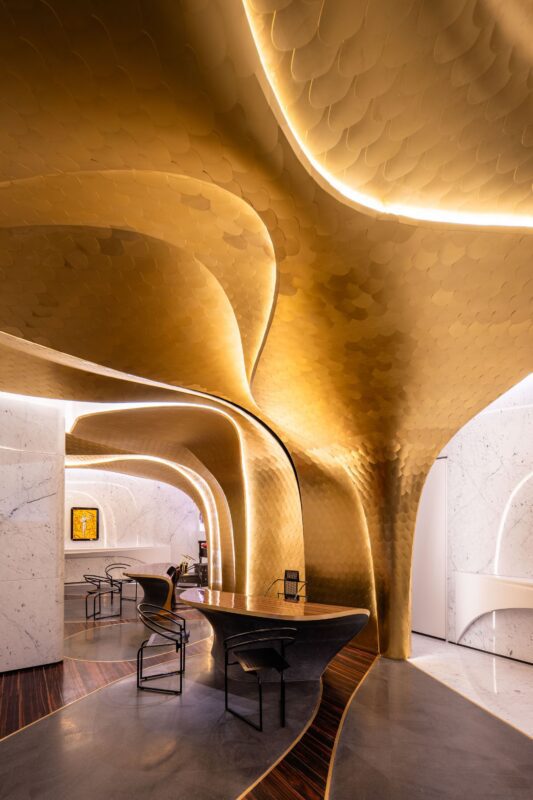
© Chris Dalton
Usually, the mobile group of lodges promotes repetition, modular design, and the commercial paradigm—explaining within the similarity of lodge rooms worldwide. However the many several types of rooms within the palazzo’s composite footprint favored an individuated relatively than systematic design method; adhering to the Italian custom as a tradition of the craftsman’s hand and the artist’s signature—the phrase design (disegno) itself is derived from the verb segnare (to signal). ZHA’s virtuosity with three-dimensional kind facilitated the lodge’s design with the individuality of Italy’s artisanal custom. Traditionally, the vaults in Rome, differ. The best is the barrel vault, and two intersecting barrel vaults generate a groin vault, during which curving quadrants from the intersecting semi-circular vaults peak in strains that connect with their factors of origin, columns, or partitions.
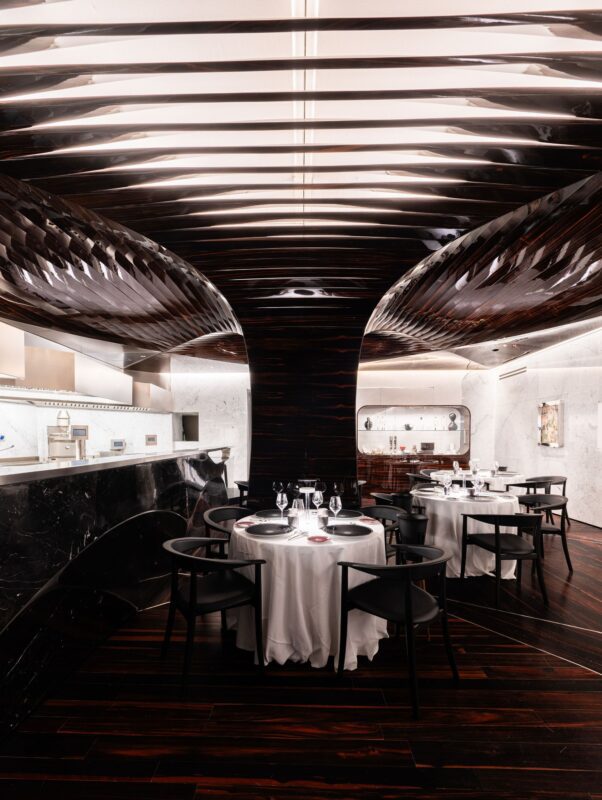
© Chris Dalton
A groin vault is common if these factors are equidistant and squared, but when the 2 columns or partitions don’t sq., the groins themselves distort, as if stretched and elasticized. ZHA developed this idea already necessitated by the palazzo’s irregular geometries: one vault may intersect one other at an angle, with sudden outcomes that generate moments of marvel. Like her Baroque predecessors devising heavens within the heights inside their buildings, Hadid had a historical past of distorting kind to enchant structure. Dimensional constraints and purposeful function alone, nevertheless, didn’t solely decide design. In a rustic with an ethic motivated by magnificence, ZHA created an applicable bellezza for every room. The lodge’s 74 rooms and suites are worlds of their very own. The architects have designed areas to a degree of utmost generosity. ZHA drives the design to abundance like Baroque frescoes that group with architectural types and human figures. Complexity extends from the ceilings and partitions to formulate the house of every room.
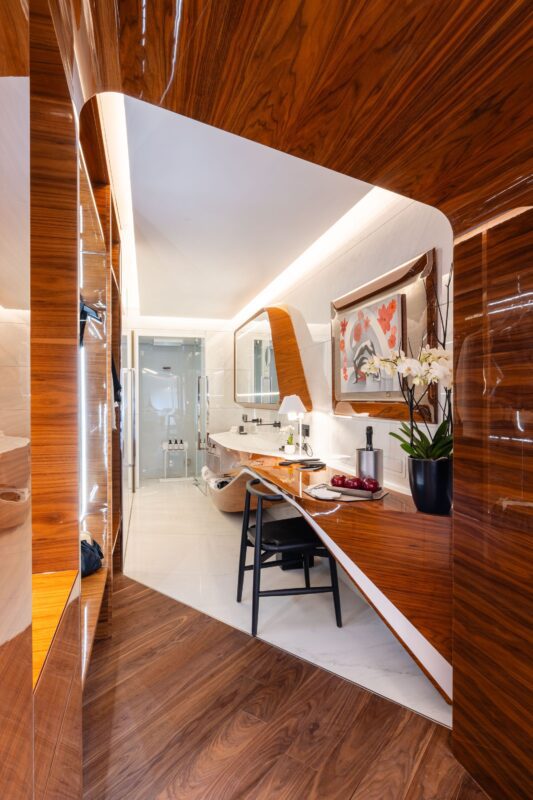
© Chris Dalton
ZHA intensifies materiality, mild, and kind all through the constructing to construction house—from room to room, from wall to furnishings. There’s by no means a way of the constructing ordered by a grid or field or axis or by some other top-down system of management. They construct and order design not simply from the vaults however the element, an omnidirectional program of complexity emanating from all surfaces to outline house. Chosen for his or her high quality and performance in bettering acoustics and naturally regulating room temperature, the composition of supplies throughout the visitor rooms and suites consists of Carrara Statuarietto and Nero Marquina marble paired with Makassar ebony, cedar or chestnut woods, and Krion engineered by Porcelenosa. Some suites on the palazzo’s piano nobile incorporate the restored Seventeenth-century frescoes whereas suites on increased flooring have non-public terraces with panoramic views of the town. Vaults of delicate brass circuli intensify the foyer’s lava stone and ebony flooring, whereas Sicilian rock salt, tadelakt (an historical Morrocan lime-based wall therapy), along with cedar and ash have been labored with precision to create the interiors of the lodge’s spa. With components of the constructing from the sixteenth century, and its later additions additionally listed by the federal government division answerable for monuments and historic buildings—the Soprintendenza Speciale Archeologia, Belle Arte e Paesaggi di Roma—intensive surveys decided that the construction required vital reinforcement. 49 firms have been concerned within the restoration of the palazzo, submitting 230 totally different functions for constructing permissions with all works overseen by the Sovrintendenza as a nationwide historic monument.
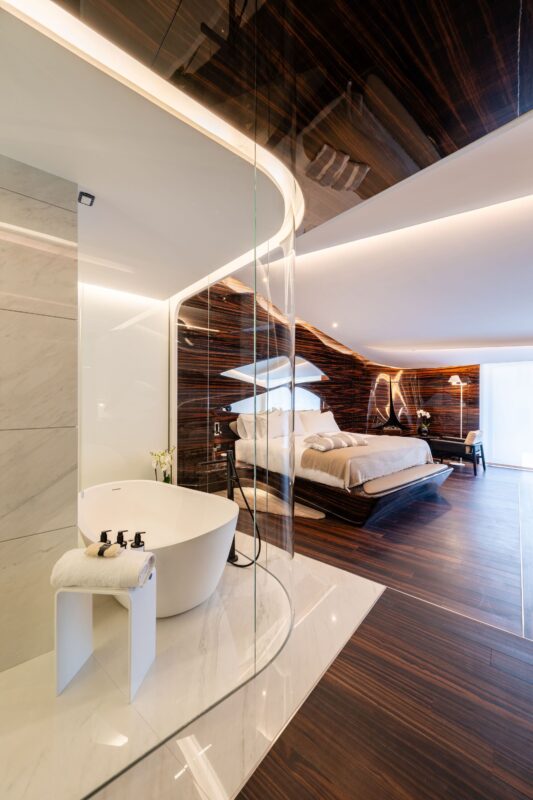
© Chris Dalton
Following the re-engineering and reinforcement of the deteriorating construction, steering issued by the Sovrintendenza dictated that the palazzo’s partitions couldn’t be altered to include the mechanical and electrical companies required for the lodge’s bedrooms, eating places, and different visitor facilities. To allow the best requirements of visitor lodging within the twenty first century, a second pores and skin has been meticulously crafted for every of the lodge’s interiors, creating a skinny cavity between the prevailing construction and the inside partitions of the lodge to deal with the companies for every room. Whereas only some centimeters in width, this cavity extends centuries in time, persevering with the palazzo’s 500 years of reinvention. Throughout early excavations to create the lodge’s backyard, the invention of a Roman wall halted works on website. Detailed archaeological surveys and excavation by hand underneath the supervision of the Soprintendenza revealed a beforehand undocumented bottega (workshop) with an opus reticulatum—a diamond-shaped stone going through utilized Roman structure roughly 2,000 years in the past giving concrete partitions an intricate patterning and element. A 90 sq.m gallery was rigorously carved into the bottom roughly 4 meters beneath the lodge’s backyard to guard the newly found Bottega. With its glazed ceiling additionally serving because the glass ground of the lodge’s swimming pool, this gallery allows the lodge’s company and guests to expertise and recognize one other layer of the Everlasting Metropolis’s historical past. Visitors and guests to this gallery can even acknowledge the scrupulous consideration to element and composition of supplies throughout the 2,000-year-old opus reticulatum is echoed within the wealthy ensemble of immaculately labored stones, woods, and metals throughout the lodge’s interiors.
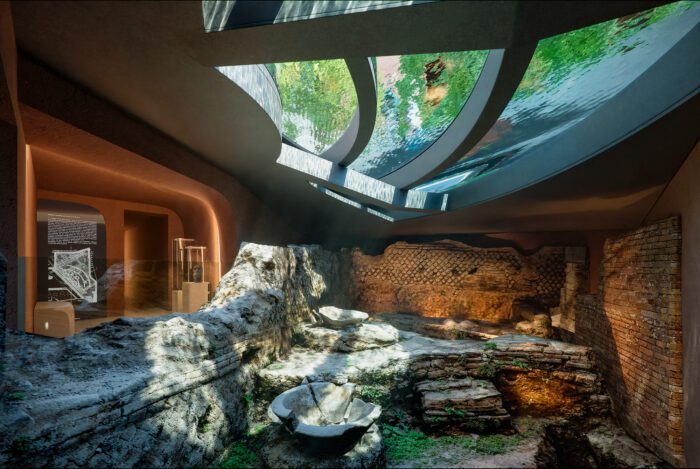
© Chris Dalton
Mission Data:
- Nation: Italy
- Pictures: Chris Dalton, Jacopo Spilimbergo
- Structural Engineers: Studio Beta srl
- MEP Consultants: Spring srl
- Lighting: Corte Gherardi snc
- Particular Constructions: EOSS Architettura
- Building Firm: Mannelli Costruzioni srl, Ga.Re.Co. srl
- Design: Zaha Hadid, Patrik Schumacher
- Mission Director: Paola Cattarin
- Mission Architects: Fulvio Wirz, Mariagrazia Lanza
- Mission Workforce: Christos Sazos, Daniel Fiser, Francesca Gulizia, Gaganjit Singh, Grace Chung, John Morrison, Kyle Dunnington, Konstantinos Psomas, Marco Guardincerri, Pasquale Lorusso, Sofia Papageorgiou, Thomas Sonder, Ludovico Lombardi, Melodie Leung, Monir Karimi Kakhki, Natassa Lianou, Ovidiu Mihutescu, Peter Logan
- Shopper: Romeo Gestioni spa
- Water Options: Fluidra Engineering Slu
- Inside Furnishings: ARTE+PARTNERS-BRAGA spa, Barretta srl, Devoto Design srl
